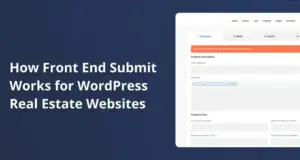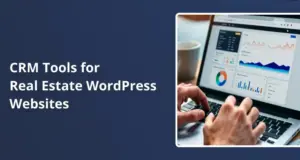Speed can make or break your website: When visitors land on your site, they expect it to load quickly. If it doesn’t, they’ll leave—because in 2025, who has the patience to wait longer than a goldfish’s attention span?
Why You Should Care About Website Speed
Website speed is a key factor in how users experience your site. Studies show that 47% of visitors expect sites to load in under 2 seconds, and 40% will leave a page that takes more than 3 seconds to load. This directly affects your bounce rate – the percentage of visitors who leave after viewing just one page.
A fast website helps in several ways:
- Keeps visitors engaged and on your site longer
- Increases the chance they’ll take action (like buying something or signing up)
- It makes your site appear more professional and trustworthy
Speed also affects how well your site ranks in search results. Google and other search engines use site speed as a ranking factor. Faster sites often appear higher in search results, attracting more visitors.
A slow website can harm your brand’s image. Users see quick-loading sites as more reliable and professional. This first impression matters, especially for mobile users with slower internet connections.
How Website Speed Is Measured
Website speed isn’t just about how fast a page loads. It’s measured using several metrics that look at different parts of the loading process:
Load Time: The total time for a page to fully load.
Time to First Byte (TTFB): How long does the browser take the first bit of data from the server?
First Contentful Paint (FCP): The time it takes for the first content (text, image, etc.) to appear on screen.
Largest Contentful Paint (LCP): How long it takes for the largest content element (like a hero image or main headline) to load.
First Input Delay (FID): The delay between a user’s first interaction and when the browser responds.
Cumulative Layout Shift (CLS): Measures how much page elements move around during loading.
Total Blocking Time (TBT): When the main thread is blocked and can’t respond to user input.
Page Size: The total size of all files needed to load the page.
Number of Requests: How many resource requests are made to the server?
These metrics are part of Google’s Core Web Vitals, focusing on LCP, FID, and CLS as key user experience indicators.
Tools for Testing Website Speed
Several tools can help you test and monitor your website’s speed:
Google PageSpeed Insights: This free tool analyzes your site’s speed on mobile and desktop. It reports on Core Web Vitals and suggests ways to fix issues. It provides lab data (controlled tests) and field data (from real users).
GTmetrix: Combines data from multiple sources to give you a complete picture of your site’s performance. It offers detailed reports with waterfall charts (showing how resources load), performance scores, and suggestions for improvement. You can also test from different locations.
Pingdom Website Speed Test: This tool tests your site’s speed from different locations and browsers. It provides detailed reports on performance metrics, page size, load time, and HTTP requests.
WebPageTest offers advanced testing options with multiple locations and browsers. It provides detailed performance reports that help identify specific issues.
Lighthouse: An open-source tool built into Chrome DevTools that checks performance, accessibility, and SEO.
Website Grader: A free tool from HubSpot that checks your website’s performance, SEO, mobile-friendliness, and security. It offers lessons through HubSpot Academy but requires signing up.
How to Conduct a Website Speed Test
Let’s walk through testing website speed using Google PageSpeed Insights:
- Go to Google PageSpeed Insights
- Enter your website’s URL
- Click “Analyze”
Google will test your site for mobile and desktop devices, checking how real users experience it and identifying performance issues. The test provides scores for performance, accessibility, best practices, and SEO.
Understanding Test Results
After testing, you’ll see several metrics that might initially be confusing. Let’s break them down:
Overall Performance Score
This score ranges from 0 to 100, with higher scores being better. A score of 90 or above is excellent, 50-89 is acceptable but needs improvement, and below 50 means your site has serious speed issues.
Core Web Vitals
Google rates your site based on key performance metrics:
- First Contentful Paint (FCP): How quickly the first content appears. Under 1.8 seconds is good.
- Largest Contentful Paint (LCP): How long does the main content load take? Under 2.5 seconds is good.
- Total Blocking Time (TBT): How long the main thread is blocked. Lower is better.
- Cumulative Layout Shift (CLS): How stable the page is during loading. Under 0.1 is good.
- Speed Index: How quickly content is visually displayed. Lower is better.
Diagnostics
PageSpeed Insights also provides specific tips for improvement, such as:
- Serve Images in Next-Gen Formats: Use newer image formats like WebP instead of JPEG or PNG.
- Properly Size Images: Make sure images aren’t larger than needed.
- Defer Offscreen Images: Use lazy loading for images not immediately visible.
- Reduce Unused CSS/JavaScript: Remove code that isn’t being used.
Accessibility
Website speed tests often check accessibility, too. Common issues include:
- Buttons Without Accessible Names: Makes it hard for screen readers to understand.
- Links Without Discernible Names: Unclear link text for screen readers.
- Non-Sequential Headings: Headings not in logical order (h1, h2, h3).
- Non-Scalable Content: Text that can’t be zoomed.
How to Improve Website Speed
Making your website faster means working on both server-side and client-side factors:
Optimize Images
- Compress images to reduce file size without losing quality
- Use proper image formats (WebP is often best)
- Resize images to match their display size
- Use lazy loading for images below the fold
Minimize HTTP Requests
- Combine multiple CSS and JavaScript files
- Use CSS sprites for small images
- Remove unnecessary elements from pages
Enable Compression
- Use GZIP or Brotli compression to shrink files sent from the server.
Use Browser Caching
- Store static resources in visitors’ browsers to speed up repeat visits
- Set appropriate cache lifetimes for different resources
Use a Content Delivery Network (CDN)
- Distribute content across global servers to reduce latency
- Particularly helpful for sites with a worldwide audience
Optimize Code
- Minify CSS, JavaScript, and HTML by removing unnecessary characters
- Use efficient coding practices
- Keep plugins and themes to a minimum
Improve Server Response Time
- Upgrade hosting if needed
- Use faster servers or a better hosting plan
- Optimize database queries
Defer Non-Critical Scripts
- Load JavaScript that isn’t needed right away after the main content loads
- Use async or defer attributes on script tags
Fix Errors
- Regularly check for and fix HTTP errors or broken links.
Choose a WordPress Theme Built for Speed
Your WordPress theme is the foundation of your entire website. A poorly coded theme can undo all your other speed improvements. When choosing a theme, look for:
- Lightweight Code: The theme should use minimal code without unnecessary features.
- Optimized for Core Web Vitals: It should meet or exceed Google’s performance standards.
- Mobile-First Approach: The theme should be responsive and fast on all devices.
- Regular Updates: Choose a theme that’s actively maintained and supported.
For WordPress users, many themes now focus on speed as a key feature. Some themes are built with a modular approach, loading only the code needed for each page. Others use advanced caching techniques or optimize their CSS and JavaScript out of the box.
If you’re using a page builder like Divi, look for recent versions focusing on performance improvements. For example, Divi 5 includes:
- Improved front-end page load speed
- Modular codebase for efficiency
- Streamlined building experience
Test Regularly
Website speed isn’t a one-time fix. Your site can slow down as you add content, plugins, or features. Make testing a regular part of your website maintenance:
- Test monthly or after major changes
- Track your scores over time
- Address new issues as they arise
Website Speed for Real Estate Websites
Website speed is a make-or-break factor for real estate websites because today’s buyers and renters demand instant results. Research by Google shows that as page load time increases from 1 second to 3 seconds, the probability of a visitor bouncing increases by 32%.
At 5 seconds, that risk jumps to 90%. Real estate shoppers often browse multiple listings across different sites and will not tolerate delays. If your pages take too long to load, users will abandon your site and head straight to a faster competitor.
According to the National Association of REALTORS®, 97% of homebuyers search for properties online. That means nearly every prospect experiences your business first through your website. A slow site doesn’t just frustrate visitors; it sends the message that your agency might be outdated or unresponsive.
Beyond user expectations, speed has a direct impact on search visibility. Google officially confirmed that site speed affects search rankings on both desktop and mobile. Slow-loading websites are penalized in search engine results pages (SERPs), which can drastically reduce organic traffic.
This is particularly costly in real estate, where high search rankings can mean the difference between consistent lead generation and being invisible online.
Moreover, real estate websites typically rely on image-heavy content: high-resolution photos, 360-degree tours, and interactive maps. These assets are essential for converting visitors into leads, but they can also significantly slow down a website if not properly optimized. According to HubSpot, a one-second delay in page response can lead to a 7% reduction in conversions. For real estate businesses, that’s not just a statistic—that’s potential buyers or renters lost.
Finally, in a mobile-first world, speed is even more crucial. Over 60% of property searches now happen on mobile devices, and mobile users are even less forgiving of slow sites. Speed optimization is not just a best practice but a necessity for survival in the real estate market.
Start by testing your site today with one of the above free tools. Identify your most significant speed issues and work on fixing them individually. Your visitors will thank you with more extended visits and more conversions.









